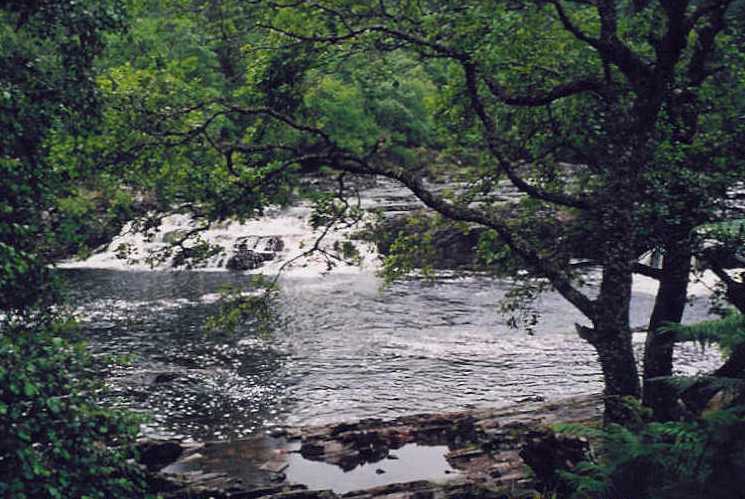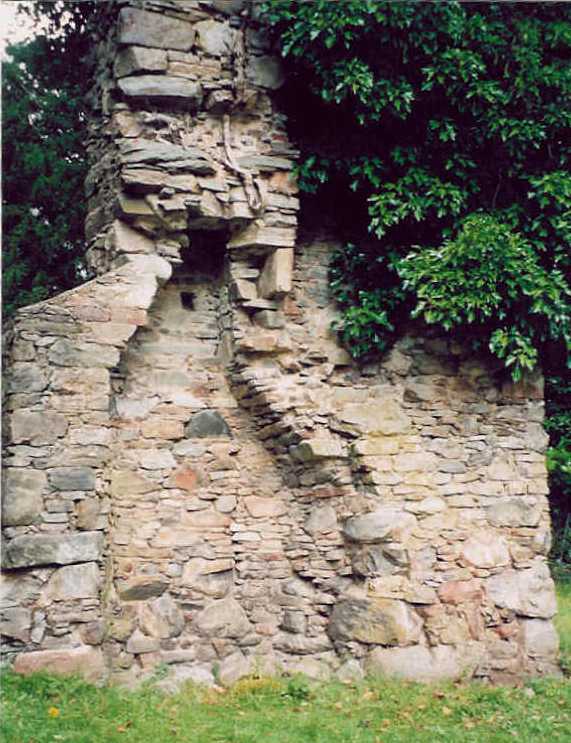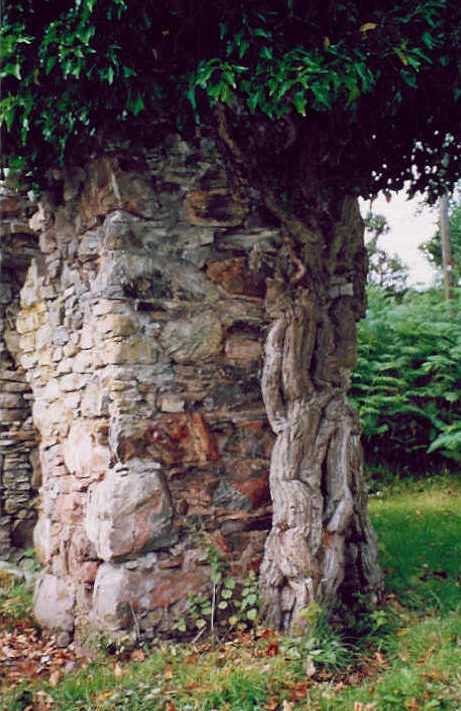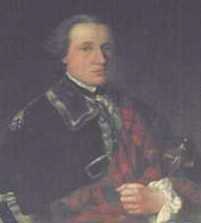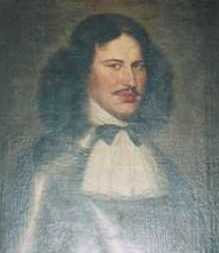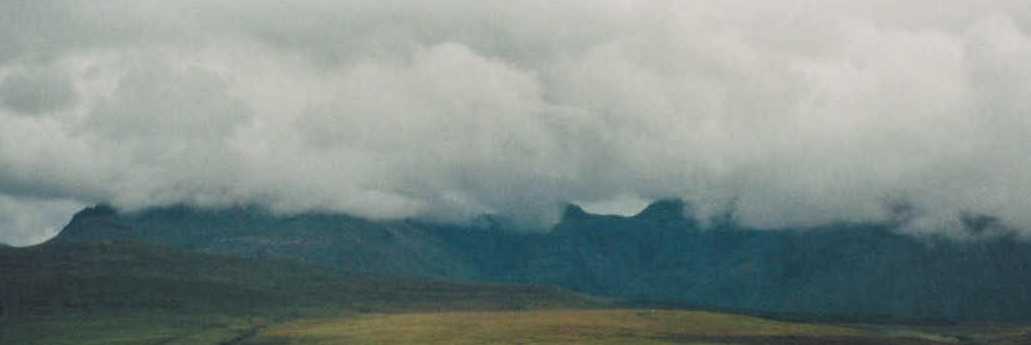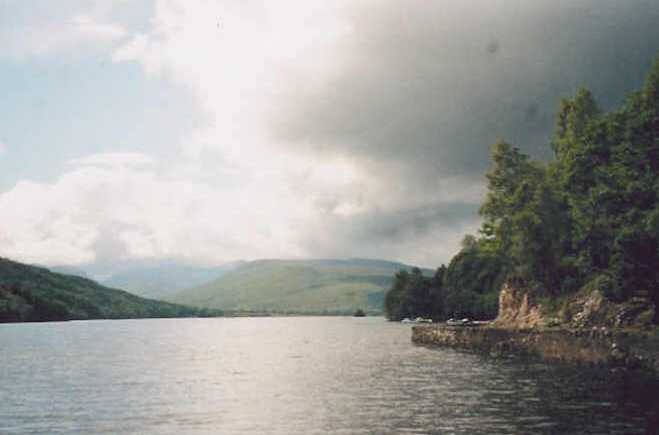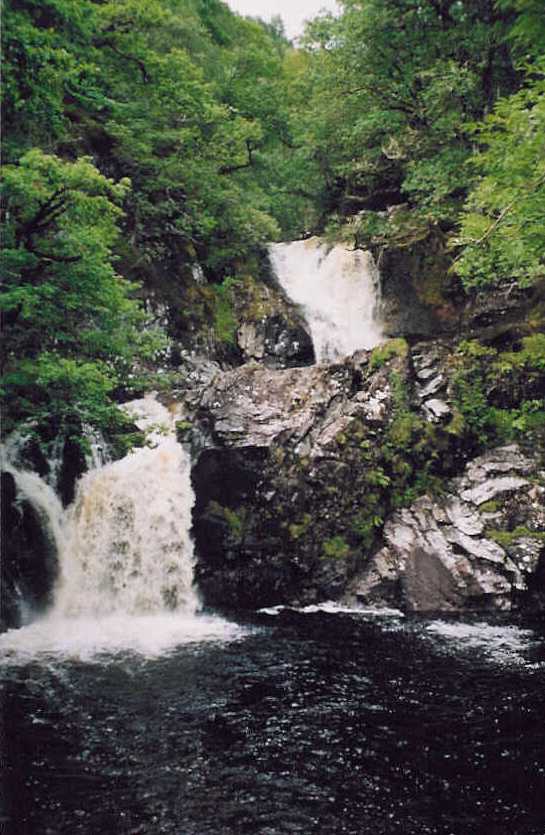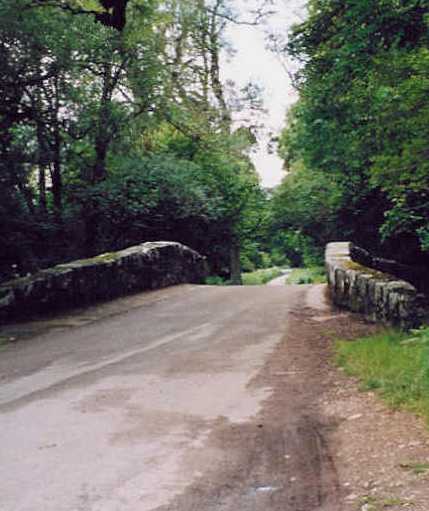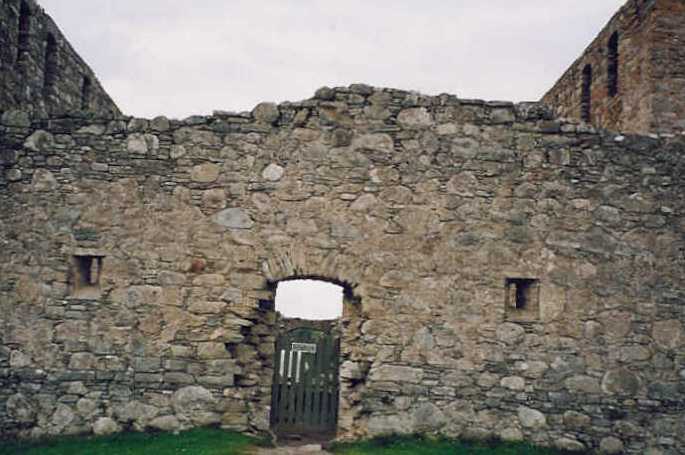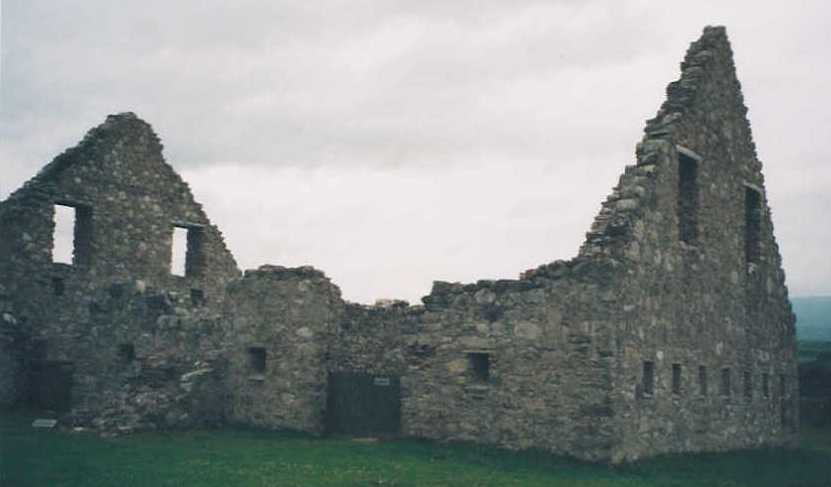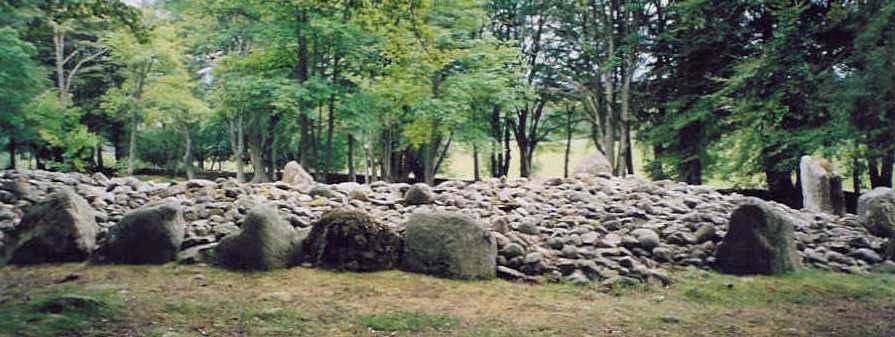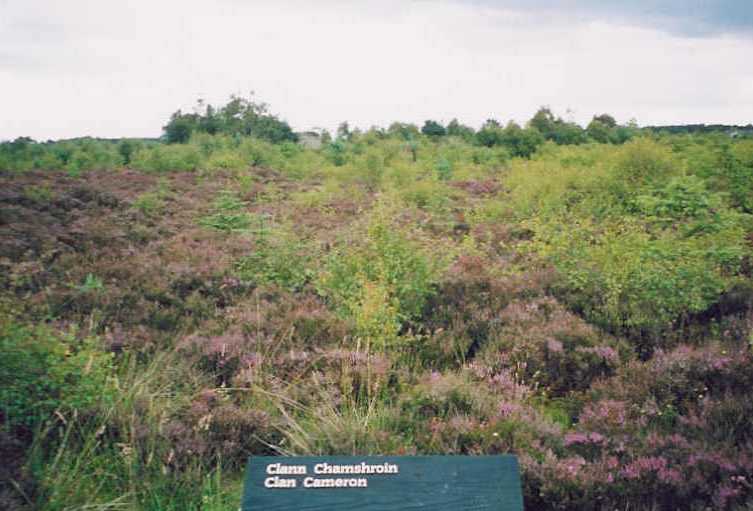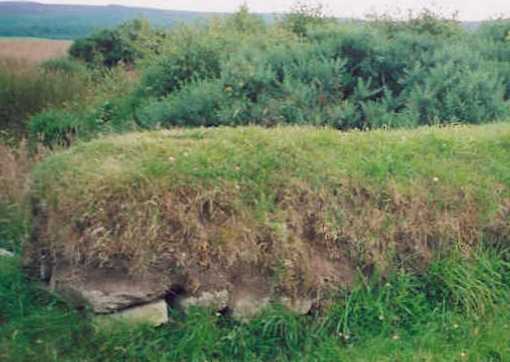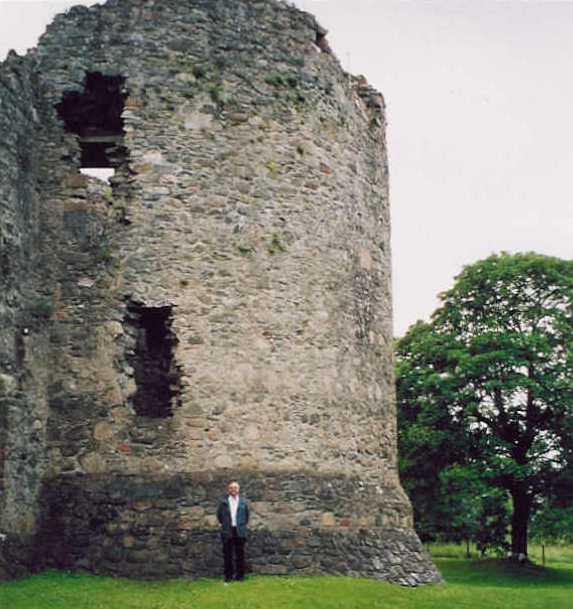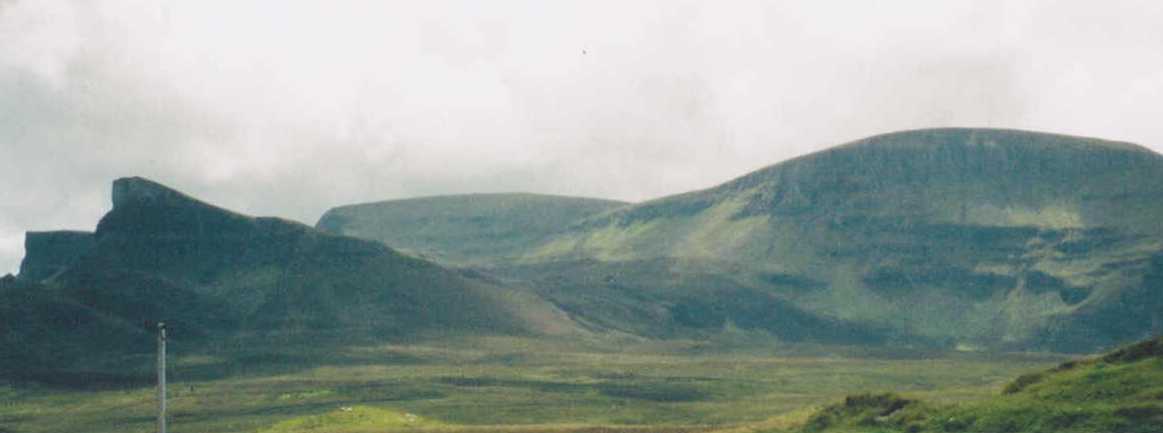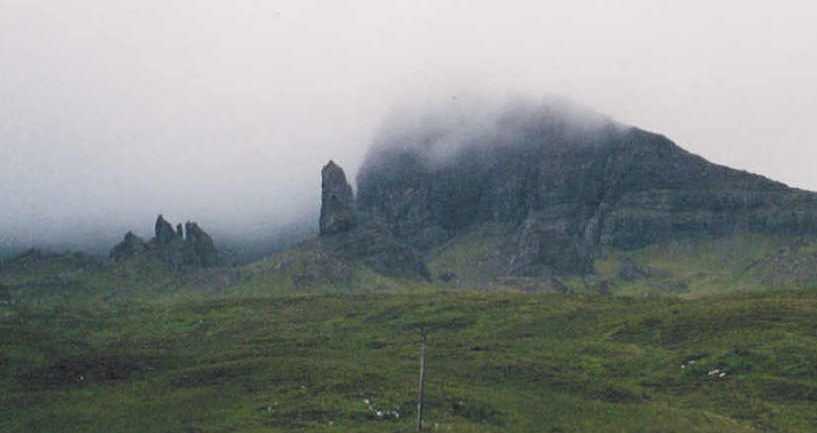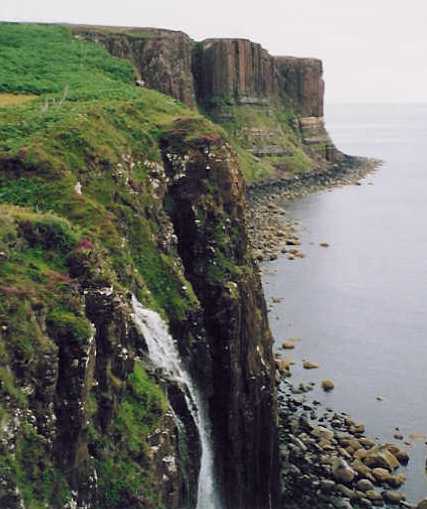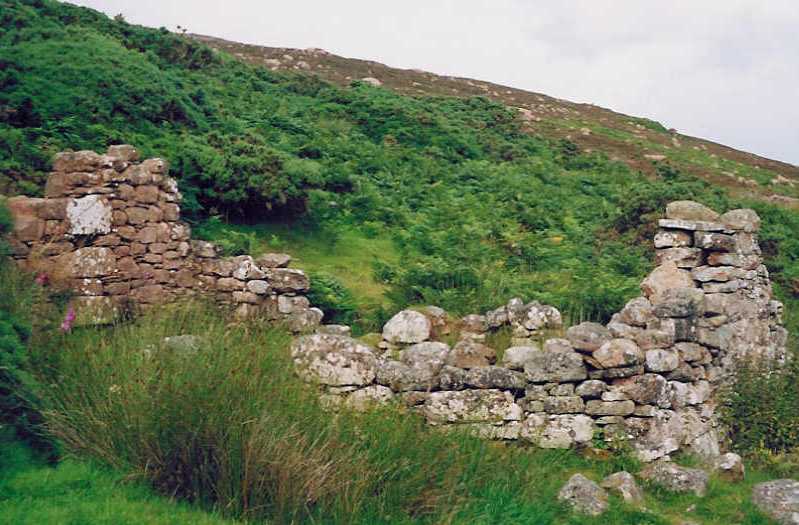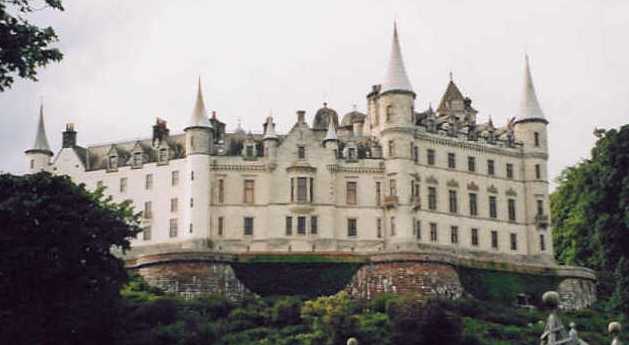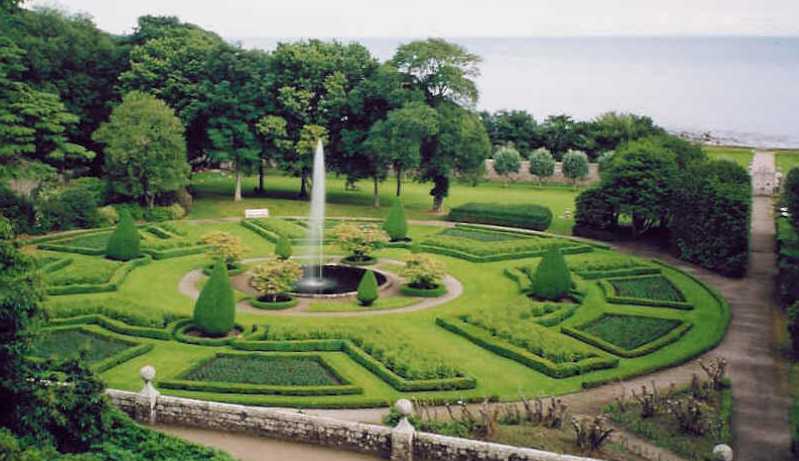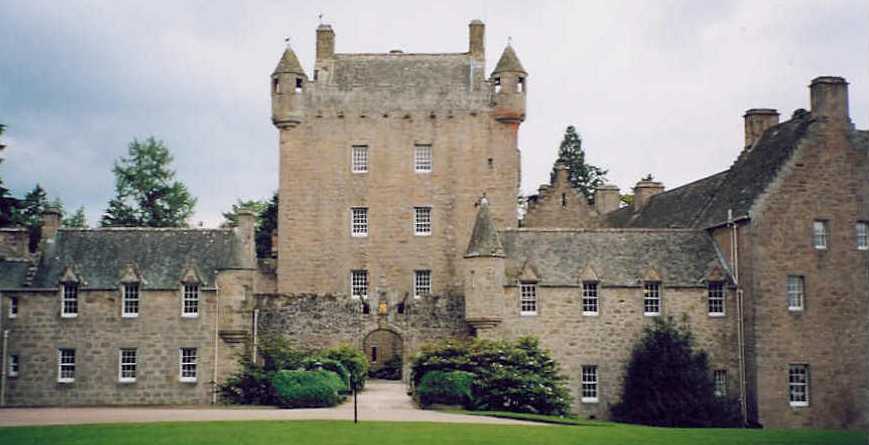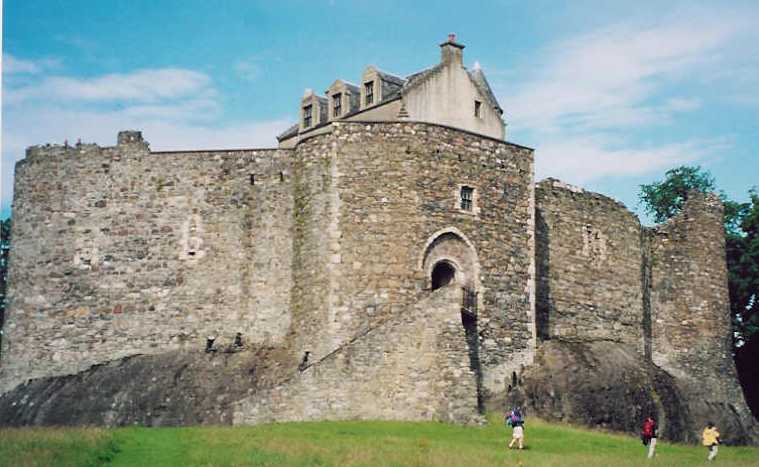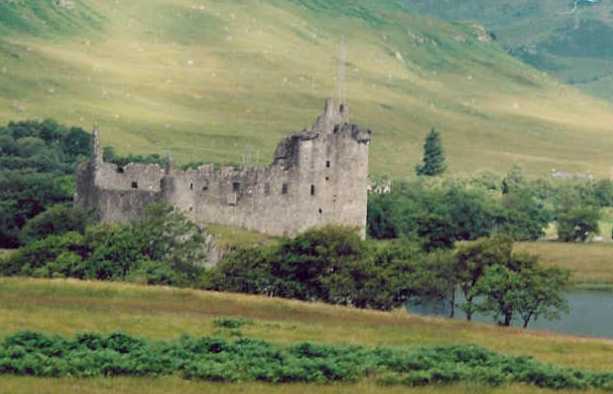| Cindy
Vallar
Author,
Editor, & Pirate Chronicler |
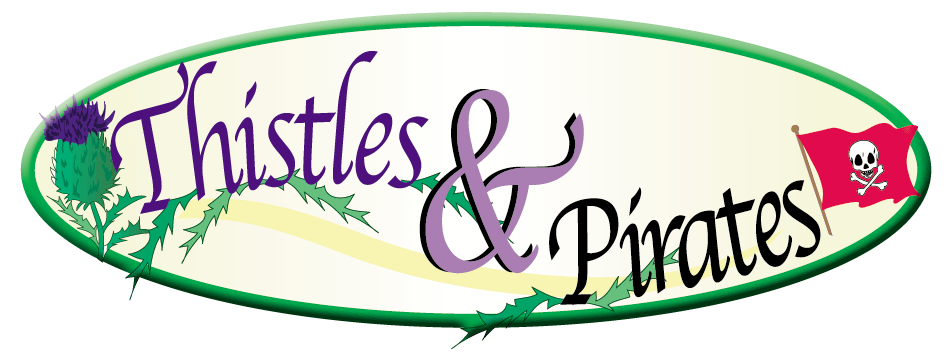
|
Thistle's Scotland - Part 2
(Links to additional pictures are at the bottom of this page)
When Duncan brought Rory to Achnacarry, they came down this hill and crossed the River Arkaig to reach Lochiel's home. (right)
This gable is all that remains of Achnacarry, clan seat of the Camerons after Ewen Dubh moved from Torcastle because of the nearness of the British fort. After Culloden, soldiers looted the house and set it afire while Rory watched from the hills above.
When Rory met with Lochiel at Achnacarry, she admired the right portrait of Sir Ewen Cameron of Lochiel, Sir Donald's grandfather. Born in 1629, he became the seventeenth clan chief, a position he held until his death in 1719. During his lifetime, he married thrice. He had no issue from his first wife, Mary, but Isobel bore him seven children and Jean bore sixteen. Sir Donald's father was Isobel and Sir Ewen's eldest son, John, who became chief in 1719, but spent most of his life in exile for his participation in the 'Fifteen. Sir Donald's uncle, Ludovic of Torcastle, was the second of Jean's sons.
While Rory and Duncan toured Cameron lands, they may have seen low clouds like these hiding the bens of Lochaber on rainy days.
When Lochiel called the clan to gather, they did so at Muirlaggen at the far end of Loch Arkaig.
After Rory's duel with Cathal, Duncan tends her wound at the Falls of Caig (Eas Chia-aig). This bridge passes over the waters of Caig below the falls.
The picture of the falls is taken from the bridge, just as the one was eight years ago that is shown on the first page of Thistle's Scotland. Notice the difference? Recognize the bridge? A scene from Rob Roy was filmed here. Liam Neeson, who played Rob Roy MacGregor (uncle to Gregor Glengyle and father to James Mor and Robin Og), jumped off the bridge and into these waters to escape from the soldiers who had captured him.
Duncan's first skirmish after the 'Forty-five begins at Ruthven Barracks. Archie, Lochiel's brother, devises a plan to gain entry into the fort through the back gate. They climb the hill behind Ruthven and its stables, from which Duncan watches the ill-fated attempt unfold.
When Rory and Duncan go riding with Gregor Glengyle, they travel to these prehistoric burial cairns, known today as the Clava Cairns.
Two passage graves flank a ring cairn, which possesses no passage into the burial chamber from the outside. Only some standing stones that ring the passage graves remain today.
When the Jacobite Army faces the Hanoverian Army on Drummossie Moor, Clan Cameron stood here in the front lines. (Culloden Battlefield)
Prior to battle, Lord Murray foresees the danger of not pulling down the turf dykes enclosing the various steadings to the right of the Jacobite line. These reconstructions show how the walls were built and demonstrate why the Argyll militia positioned themselves behind them to rain down a terrible fusillade of fire that inflicted high casualties upon the Atholl Brigade and Clan Cameron.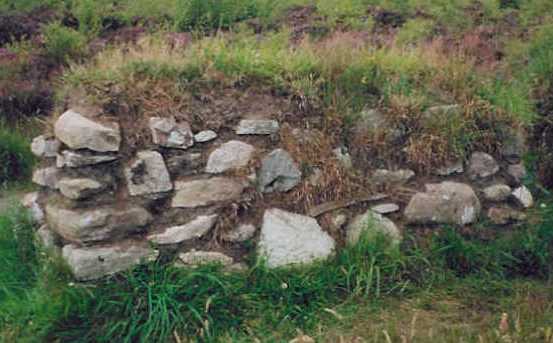
Peter Lawrie, a descendant of Gregor Glengyle, wears the style of plaid worn during the '45. The tartan design is based on the remaining swatches of a plaid Prince Charles Edward Stuart wore. The weapon Peter holds to my throat is a Scottish dirk.
In contrast to the box-bed pictured on Thistle's Scotland, this bed belonged to a wealthier class of people. D. MacPherson constructed this box-bed in the nineteenth century for his wedding night, whereas the other bed was built in 1702.
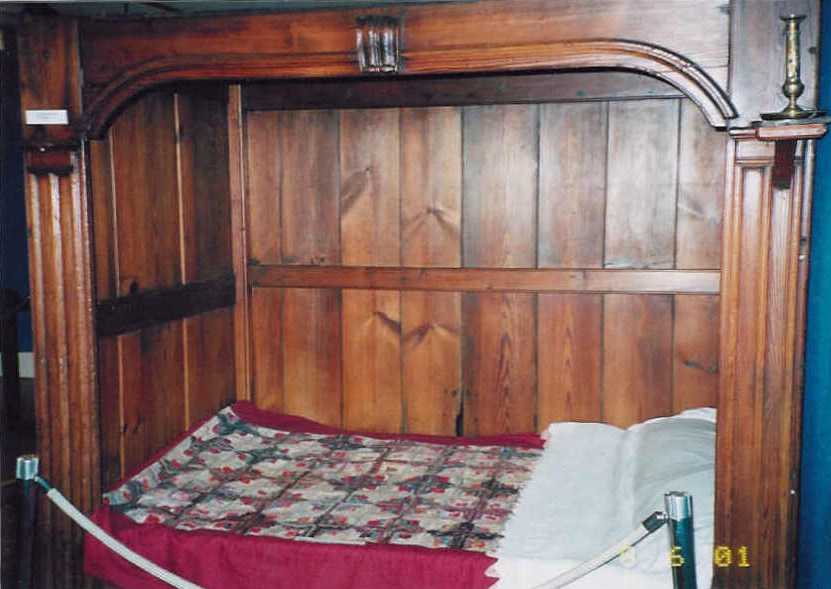
Old Inverlochy Castle, a square castle with four corner towers, lies between Achnacarry and Fort William. This thirteenth-century stronghold was home to the Comyns and the site of three battles, including one in 1645 when Montrose defeated Covenanters led by Argyll. (left)
Many people recognize Eilean Donan, one of the most photographed castles in Scotland, from the opening scenes of The Highlander. During the Iron Age, a fort occupied this ground on the north shore of Loch Duich. In 1220, Alexander II erected a castle to deter Norse invaders. Eventually, the castle passed into the hands of Clan Mackenzie and during the Rising of 1719, it served as a garrison for Spanish soldiers until a Hanoverian warship blew it apart. It remained in ruins for two hundred years before being rebuilt. (right)
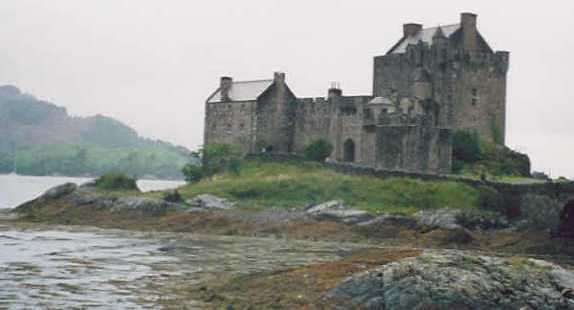
Noted for its stunning scenery, the Isle of Skye is the largest of the Hebridean islands. It was home to Christian missionaries, Norse settlers, and the Lords of the Isle. After Culloden, Flora Macdonald brought Prince Charles, disguised as Betty Burke, to Skye. The ruins of two Macdonald strongholds, Dunscaith Castle and Knock Castle, can be found south of the Cuillin Mountains. Dunvegan Castle, the seat of Clan MacLeod since the eleventh century, lies to the north at the head of Loch Dunvegan.
At the foot of The Storr, a 2,360-foot cliff, stands the Old Man of Storr. Clouds shroud the pinnacles and crags of the cliff, while the dark monolith stands guard.
On a wind-swept, steep-sloping cliff on the eastern coast of the Northwest Highlands stand the ruins of a crofting village known as Bad Bea. Twelve families relocated here in 1840 during the Highland Clearances. They built stone houses in which both they and their cattle lived, sometimes without a partition between them. Instead of fireplaces, the hearth was an open fire in the middle of the floor with a smoke hole in the roof above. They grew oats and potatoes in the rocky soil. Hens and children were tethered to prevent the high winds from blowing them into the sea below. Eventually, many of the nearly eighty villagers immigrated to New Zealand. In 1911, they and their families erected a memorial using the stones from the cottage of John Badbea, a respected preacher and doctor who owned the only watch in the village. (right)
Seat of the Duke of Sutherland, Dunrobin Castle overlooks the sea and beautifully landscaped gardens. The original square keep, built around 1275, hides amidst the turrets of a French chateau.
In the fourteenth century, Cawdor Castle was the seat of the Thanes of Cawdor. While most people associate the Thane of Cawdor as the title the witches promised Macbeth, Shakespeare's play takes place in 1040 when the castle occupied a different site. The central tower was built in 1372 and fortified in 1454. Within the keep's walls are the remains of a hawthorn or yew tree. The castle belongs to the Campbells, who have been Earls of Cawdor since 1827.
These ruins date from the thirteenth century. It is believed that Duncan MacDougall, founder of Ardchatten Priory, built the castle. In 1409 the first Earl of Argyll was granted permanent tenure to the property. A Cameron of Lochiel was beheaded within these walls in the sixteenth century, and Flora MacDonald was briefly imprisoned here after the Rising of 1745. In 1810 fire gutted the gatehouse, ending the castle's use as a residence.
Kilchurn Castle belonged to the Campbells of Glenorchy, a cadet branch of Clan Campbell. They occupied the castle for about a century, although MacGregors were keepers of the castle. The five-story tower house dates back to the fifteenth century. The barracks, built in the late seventeenth century, garrisoned soldiers after the Rising of 1715 and again during The 'Forty-five. Pictures of the castle often adorn calendars.
International Gathering of Clan Cameron
Scottish Highlands
Copyright © 2022 Cindy Vallar
All artwork and
photographs are copyrighted and
may not be used without
permission of the owner.
If I do not own the copyrights,
I have legally secured
permission to use them.
